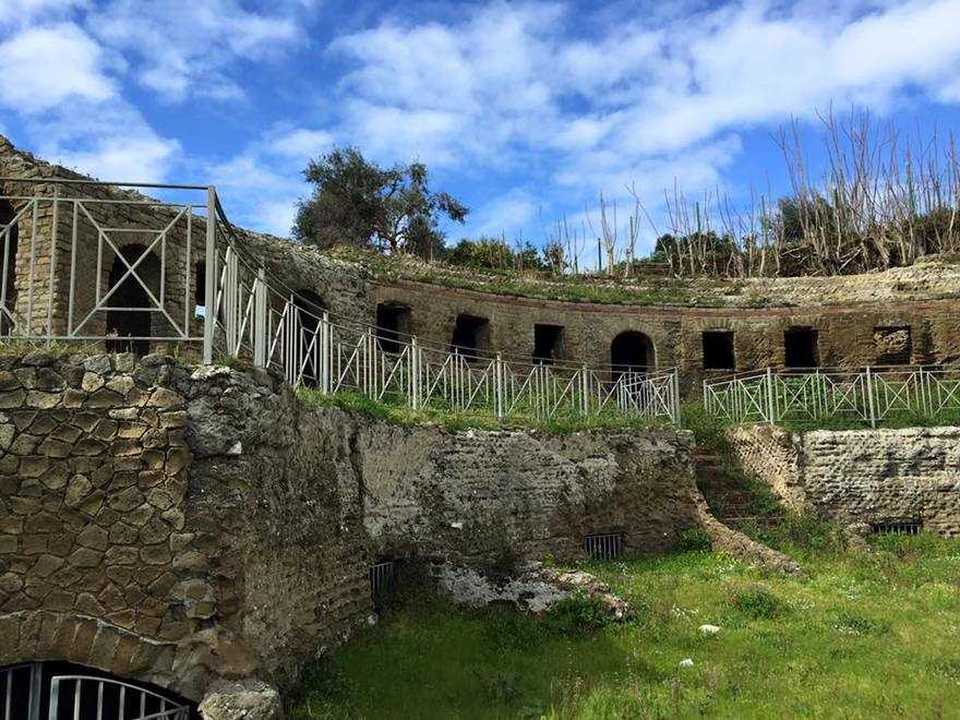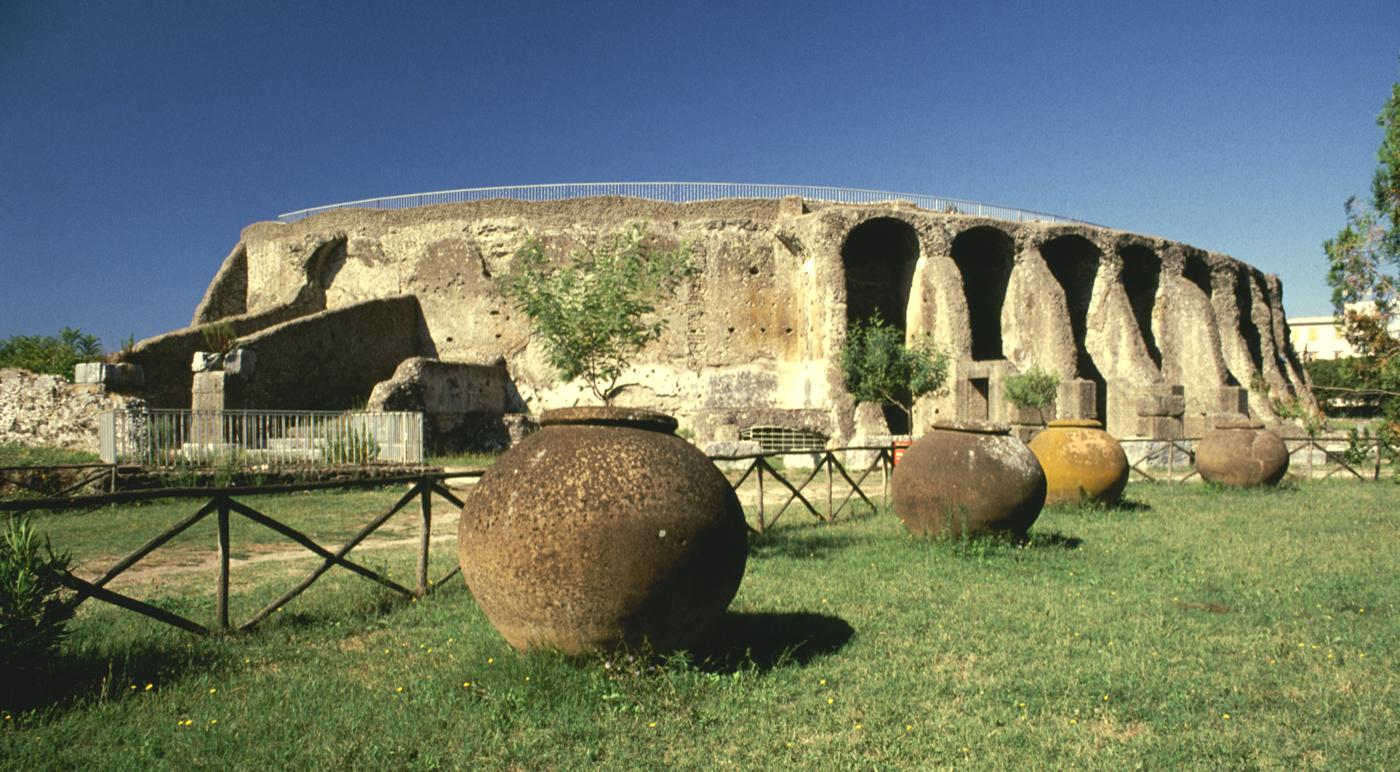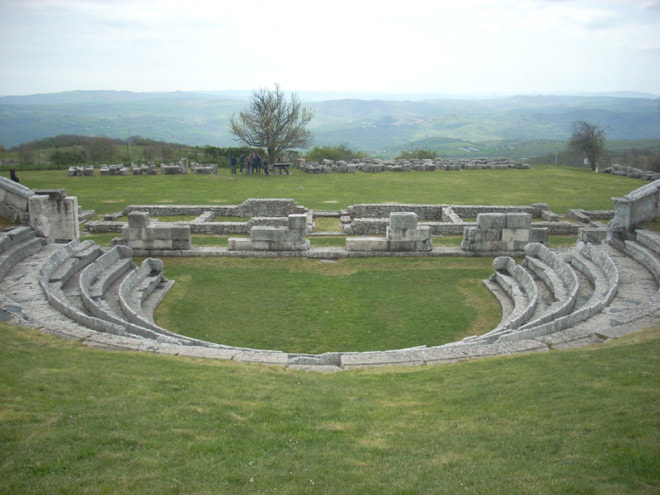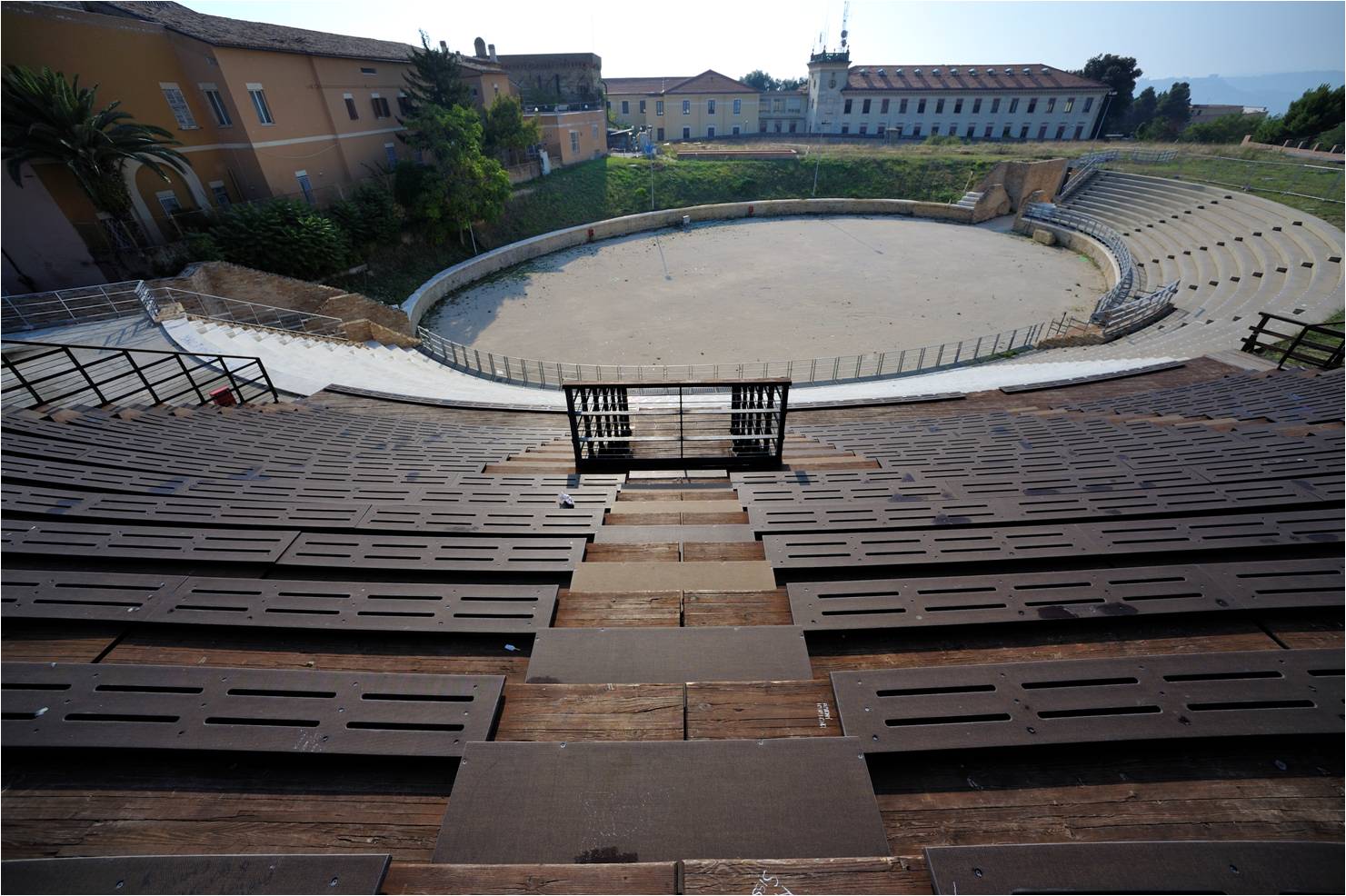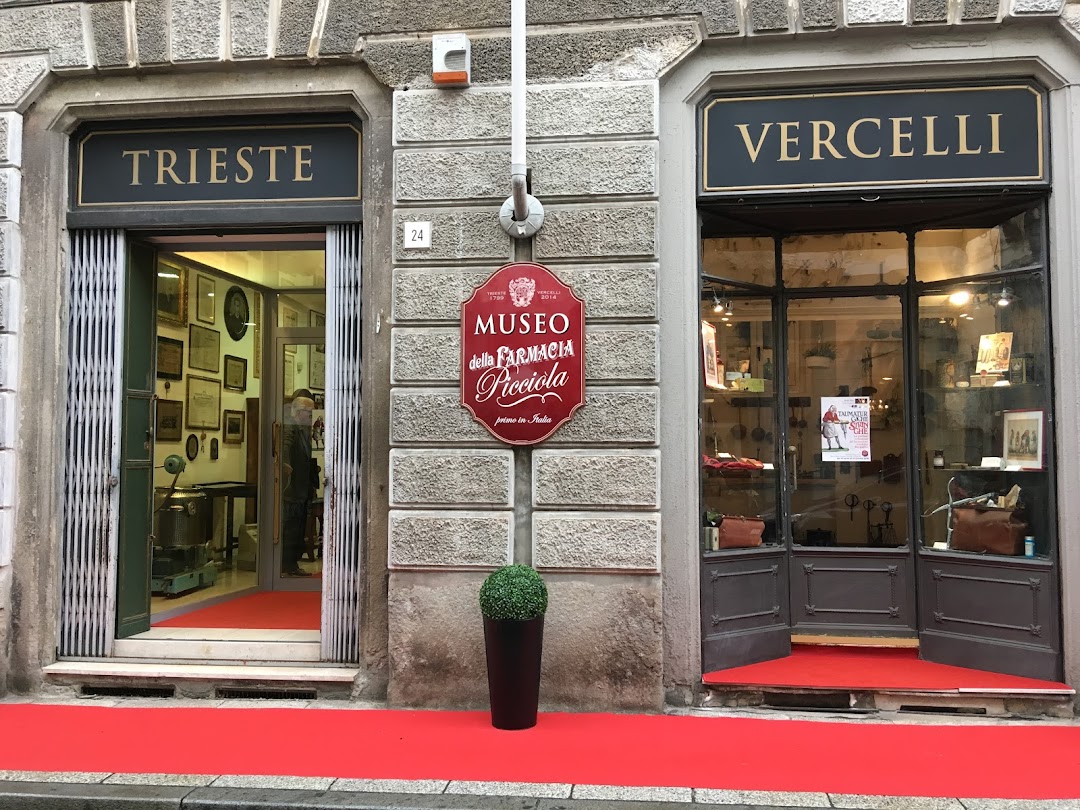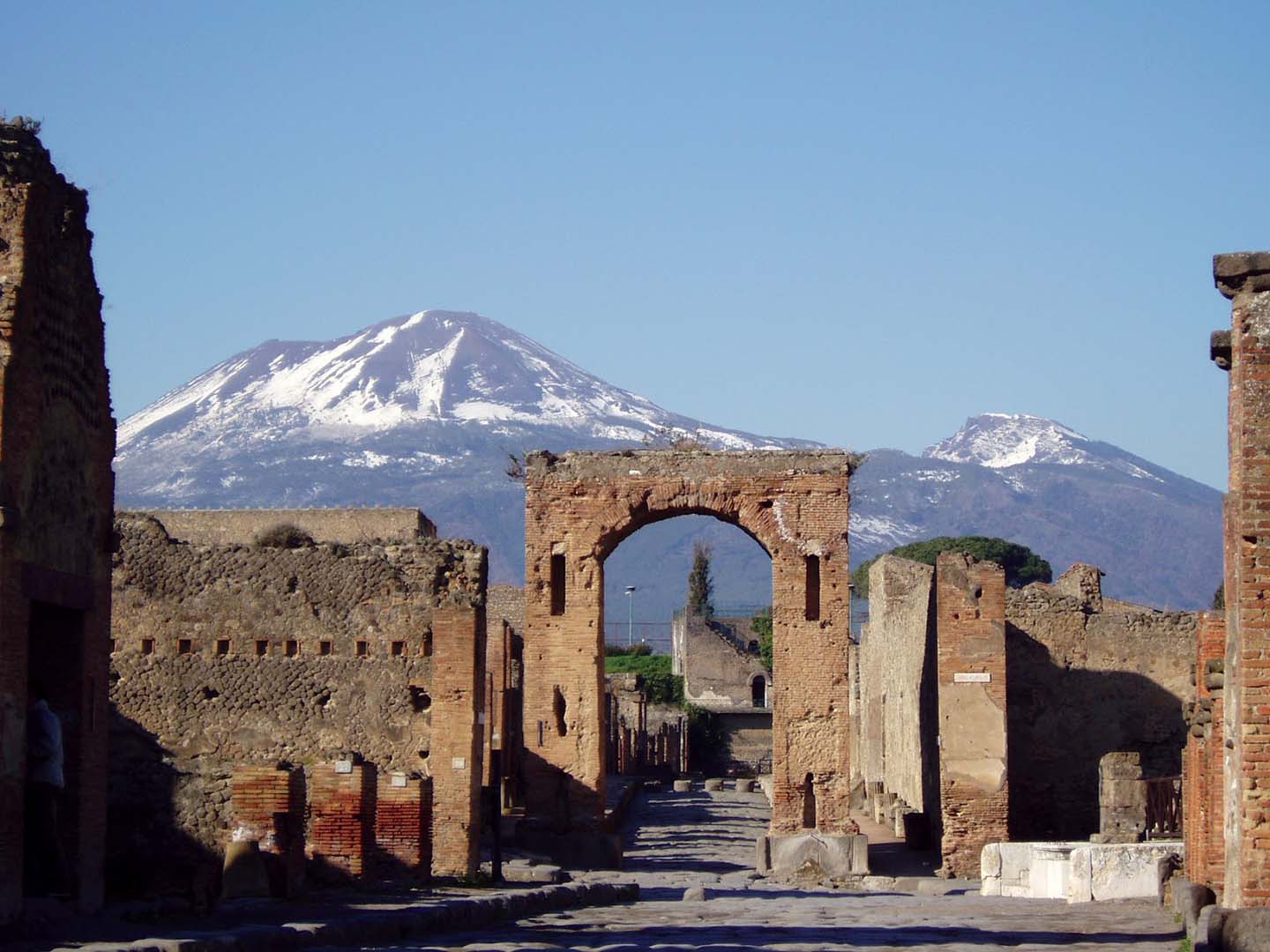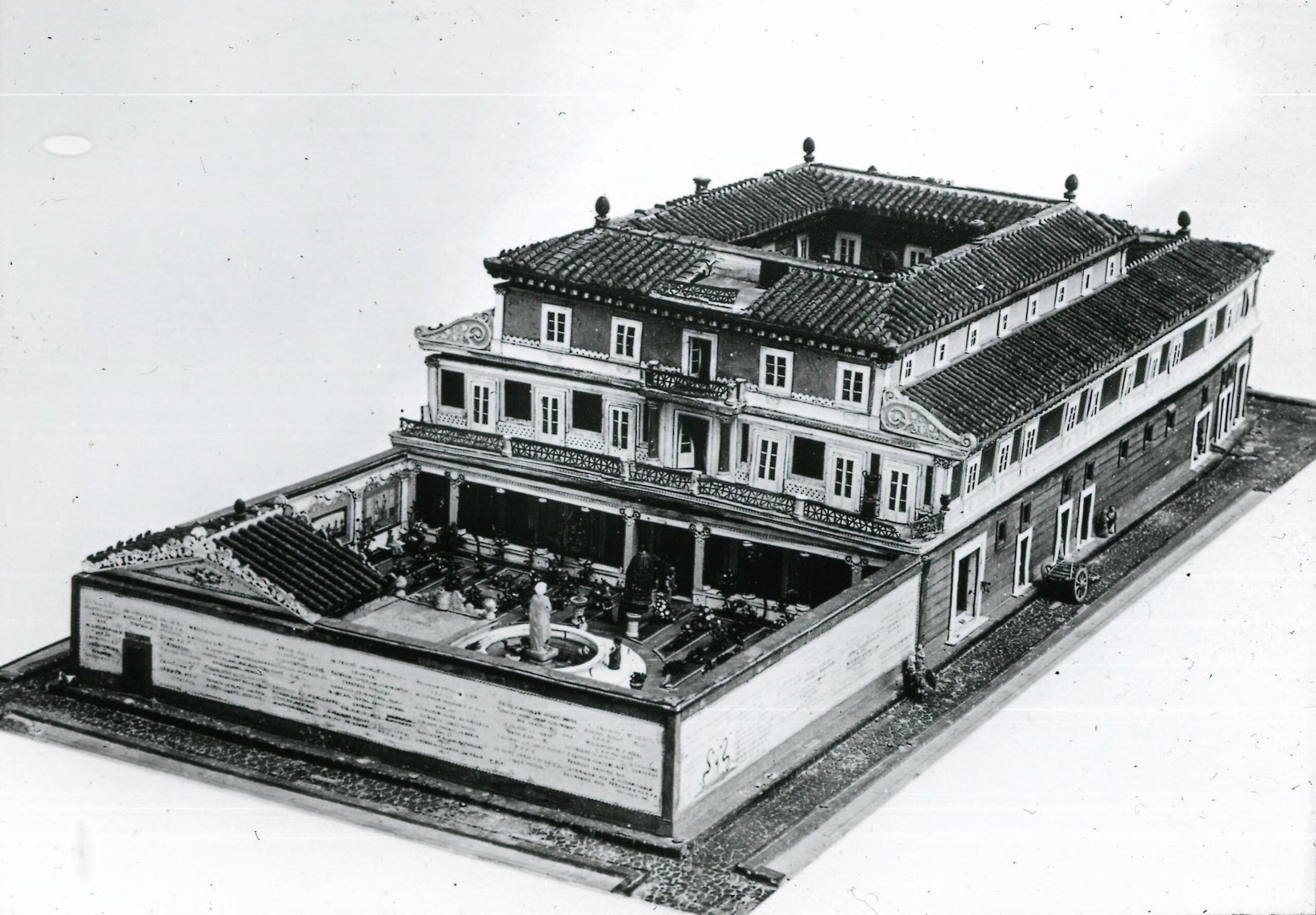Near the sea there are the remains of a building of the imperial age, in which tradition has wanted to recognize the tomb of Agrippina, mother of Nero.
Actually the monument is a theatre-nymphaeum, part of an imposing maritime villa, which has been destroyed. The structure, born as odeion (covered theatre for musical auditions or mime performances) in the Augustan or Julio-Claudian age, between the end of the 1st and the beginning of the 2nd century A.D. was transformed into an exedra nymphaeum.
The monument consists of three hemicycles arranged on several levels: about 1.30 m below the level of the current beach opens the first hemycle, while the middle one is covered by a rampant vault on whose extrados are preserved the signs of a staircase in opus reticulatum; three openings interspersed with windows mark the outer wall. At a lower level there is also a room covered by a vault decorated with stuccoes; the walls of the niches and windows and the corridor that originally connected the building with the villa are similarly decorated. On the same level as the previous one there is a third hemicycle, whose vault has collapsed and whose internal wall is marked by half-columns covered in stucco with Corinthian capitals, so as to form a sort of corridor divided into small rooms by transversal partitions.
